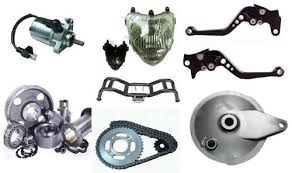Business
Insomnia and Mental Health: Strategies for Healing

Insomnia and Mental Health: Strategies for Healing
Insomnia and mental health are deeply interconnected. Insomnia can exacerbate existing mental health issues and, conversely, mental health conditions can contribute to or worsen insomnia. However, with the right strategies and support, it’s possible to break this cycle and improve both your sleep and mental well-being. Here are some effective strategies for healing like the healthy and natural benefits of medicinal mushrooms:
- Seek Professional Help:
- If you’re experiencing persistent insomnia and believe it may be related to a mental health condition such as anxiety or depression, it’s crucial to seek help from a mental health professional. They can provide a comprehensive assessment and recommend appropriate treatment options.

- Cognitive-Behavioral Therapy for Insomnia (CBT-I):
- CBT-I is a highly effective therapy specifically designed to treat insomnia. It helps individuals identify and change the thought patterns and behaviors that contribute to sleep problems. CBT-I can be tailored to address any underlying mental health concerns as well.
- Medications and Supplements:
- In some cases, healthcare providers may prescribe sleep medications or supplements to help improve sleep. These should be used under strict medical supervision due to potential side effects and dependency concerns.
- Mindfulness and Relaxation Techniques:
- Practices such as mindfulness meditation, progressive muscle relaxation, and deep breathing exercises can help reduce stress and anxiety, making it easier to fall asleep.
- Exercise and Physical Activity:
- Regular physical activity has been shown to have a positive impact on both sleep and mental health. Engage in activities you enjoy, such as walking, jogging, yoga, or dancing, but avoid vigorous exercise close to bedtime.
- Stress Management:
- Learning effective stress management techniques can be particularly helpful for improving both sleep and mental health. Consider techniques like journaling, art therapy, or talking to a therapist.
- Maintain a Consistent Sleep Schedule:
- Go to bed and wake up at the same time every day, even on weekends. Consistency helps regulate your body’s internal clock, improving sleep quality and overall mental well-being.
- Limit Caffeine and Alcohol:
- Reduce or eliminate caffeine and alcohol consumption, especially in the evening. These substances can disrupt sleep and exacerbate anxiety or depression.
- Limit Exposure to Screens:
- The blue light emitted by electronic devices like phones, tablets, and computers can interfere with sleep and exacerbate mental health issues. Avoid screens at least an hour before bedtime.
as needed.
Remember that healing from insomnia and mental health challenges often takes time, and setbacks can occur. Be patient with yourself and stay committed to your treatment plan. With the right strategies, support, and perseverance, it is possible to improve your sleep and mental well-being, breaking the cycle of insomnia and mental health issues.

